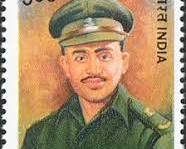In India, the highest gallantry award is the Param Vir Chakra. It is awarded for the most conspicuous bravery in the face of the enemy. This prestigious award recognises acts of extreme courage by soldiers, airmen, and sailors during wartime.
India has several types of gallantry awards, each designed to honour different levels of bravery. These include the Ashoka Chakra, Maha Vir Chakra, Vir Chakra, and the Shaurya Chakra, among others. Each award has its significance and criteria for receiving it.
In this article, we’ll explore these gallantry awards, their history, and how they are awarded. We’ll also take a look at the inspiring stories of the brave soldiers who received these honours for their exceptional courage and sacrifice.
Which is the Highest Gallantry Award in India?
The highest gallantry award in India is the Param Vir Chakra (PVC). It is awarded for the most conspicuous act of valour, courage, or self-sacrifice in the face of the enemy, whether on land, at sea, or in the air.
It is equivalent to the Victoria Cross in the UK and the Medal of Honour in the US and is considered the highest military decoration in the country.
The PVC is rarely awarded and usually posthumously. Recipients are recognised for their extraordinary acts of bravery and selfless devotion to the nation, often in the face of formidable odds.
For You| GK Quiz on Indian Army: Can You Ace This Indian Army Challenge? Test Your Skills
What are the Different Types of Gallantry Awards in India?
Gallantry awards in India recognise acts of bravery and valour by military personnel and civilians. These awards are categorised into two main types: Wartime Gallantry Awards and Peacetime Gallantry Awards.
Wartime Gallantry Awards
These awards are conferred for acts of bravery in the face of the enemy. They include:
1. Param Vir Chakra (PVC):
- The highest military decoration for valour during wartime.
- Instituted on January 26, 1950, but effective from August 15, 1947.
2. Maha Vir Chakra (MVC):
- The second highest gallantry award for conspicuous gallantry in the presence of the enemy.
- Also instituted on January 26, 1950.
3. Vir Chakra:
- The third highest wartime gallantry award, awarded for acts of bravery in combat situations.
- Established simultaneously with the first two awards on January 26, 1950.
Discover| Indian Army Day 2025: Facts About Indian Army You Must Know
Peacetime Gallantry Awards
These awards honour acts of bravery outside the context of warfare. They include:
1. Ashoka Chakra:
- The highest peacetime military award for valour or courageous action.
- Instituted as Ashoka Chakra Class-I on January 4, 1952, and renamed in 1967.
2. Kirti Chakra:
- The second highest peacetime gallantry award for self-sacrifice or courageous action away from battle.
- Originally known as Ashoka Chakra Class-II when instituted in 1952.
3. Shaurya Chakra:
- Awarded for extraordinary gallantry in peacetime.
- Initially named Ashoka Chakra Class-III at its inception.
In Case You Missed| Republic Day 2025: Why We Hoist the Flag on August 15 and Unfurl It on January 26? Check Reason Here
Summary of Awards
| Award Name | Type | Description |
| Param Vir Chakra | Wartime | Highest award for valor in combat |
| Maha Vir Chakra | Wartime | Second highest for conspicuous gallantry |
| Vir Chakra | Wartime | Third highest for bravery in combat |
| Ashoka Chakra | Peacetime | Highest award for valor during peacetime |
| Kirti Chakra | Peacetime | Second highest for courageous action outside combat |
| Shaurya Chakra | Peacetime | Awarded for extraordinary gallantry in peacetime |
Who Was the First Person to Receive Param Vir Chakra?
The first person to receive the Param Vir Chakra was Major Somnath Sharma. He was awarded the honour posthumously for his exceptional bravery and leadership during the Indo-Pakistani War of 1947–48.
On November 3, 1947, Major Sharma's company was tasked with holding a position near Srinagar Airport.
Despite being heavily outnumbered and under intense enemy fire, Major Sharma led his men with unwavering courage, inspiring them to fight on.

Source: Wikipedia
He personally engaged the enemy, directing fire and even filling magazines for light machine gunners. Realising the critical importance of holding the position, Major Sharma refused to withdraw.
He sent a message that echoed his determination: "The enemy is only 50 yards from us. We are heavily outnumbered. We are under devastating fire. I shall not withdraw an inch but will fight to the last man and the last round."
Major Sharma made the ultimate sacrifice, but his valour and leadership saved the day, allowing Indian forces to secure Srinagar Airport.
His actions exemplify the highest ideals of courage, selflessness, and devotion to duty, making him a true hero and the first recipient of India's highest gallantry award.
What's Next| Right Way of Flag Hoisting on Republic Day: Check FAQs Related to Indian National Flag
Comments
All Comments (0)
Join the conversation